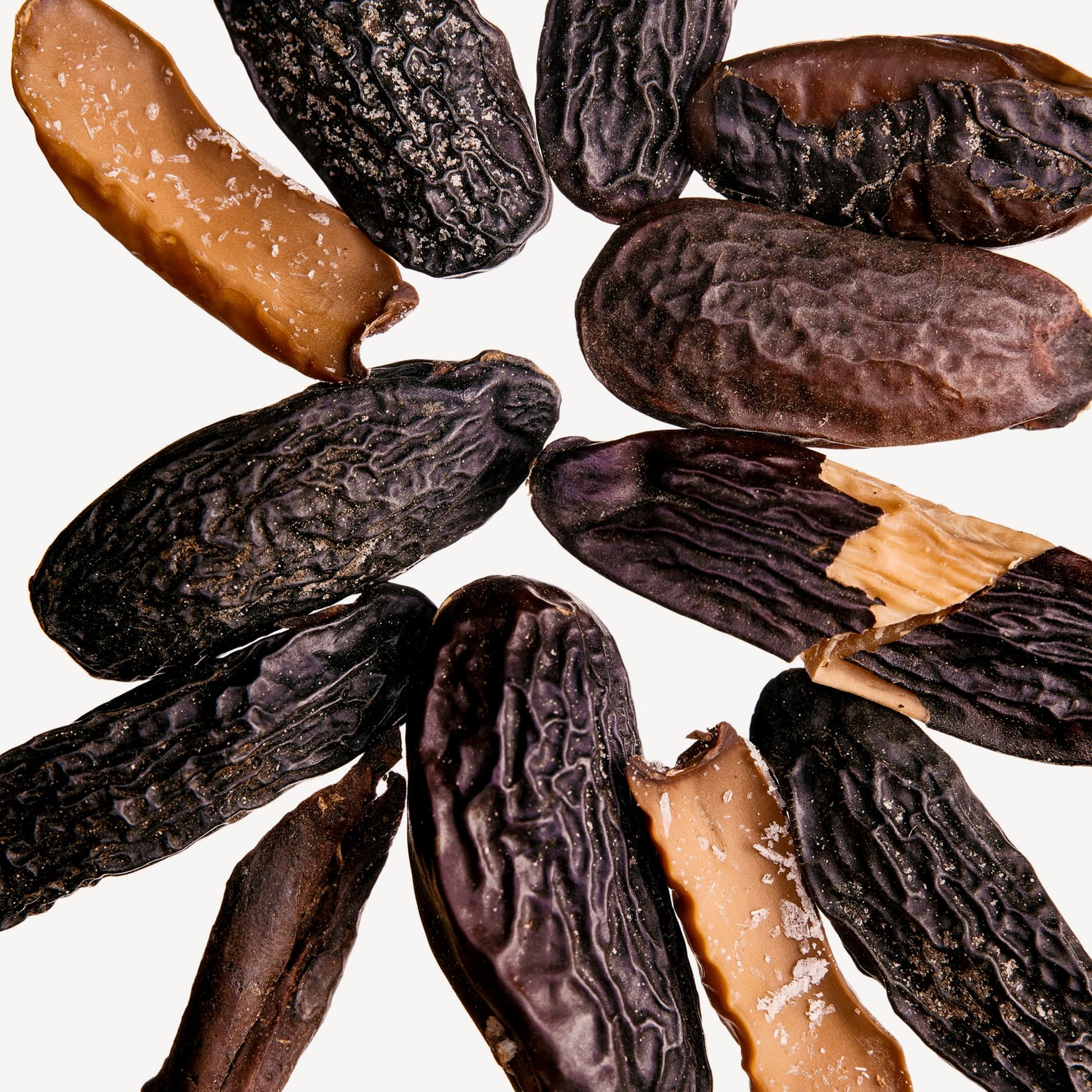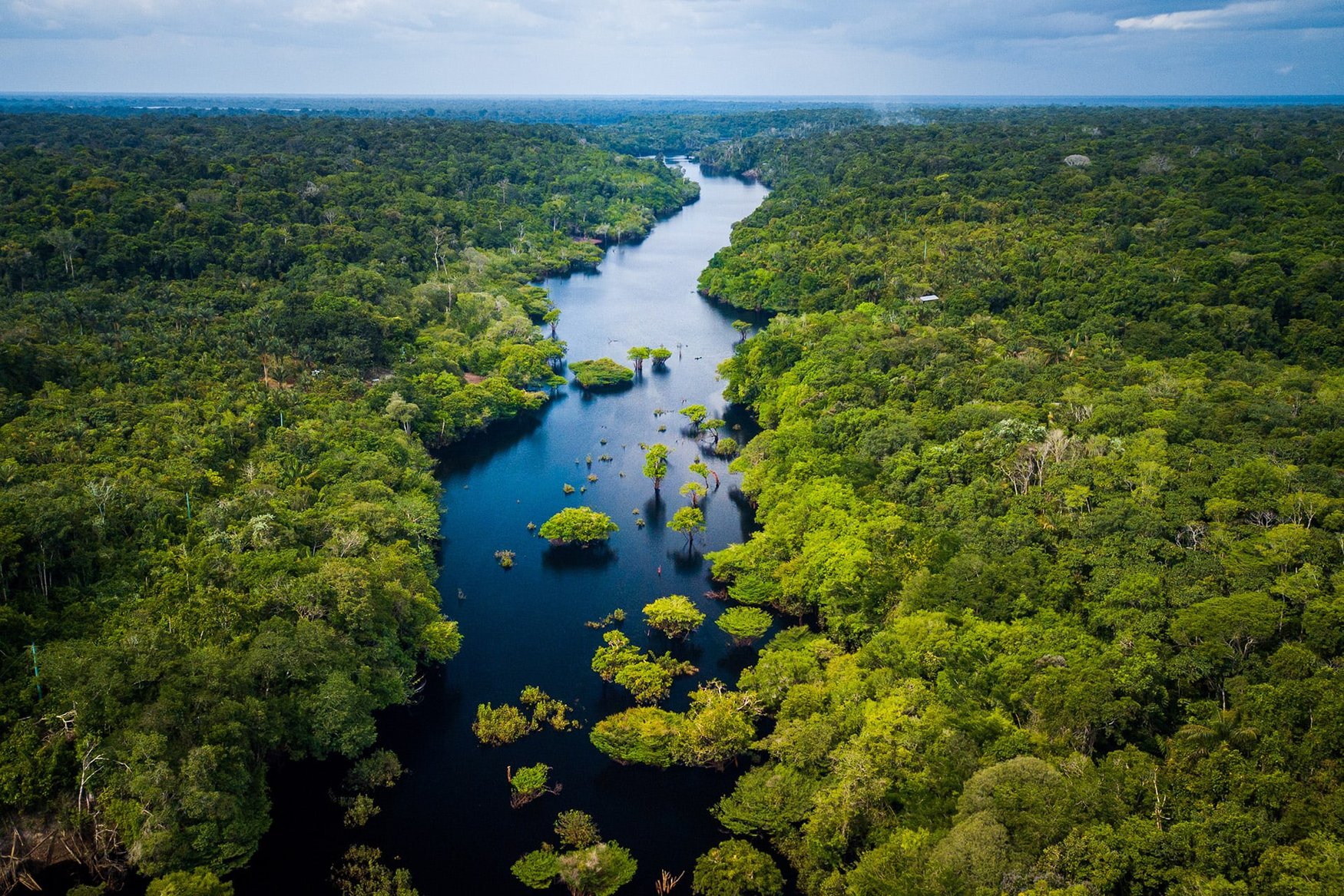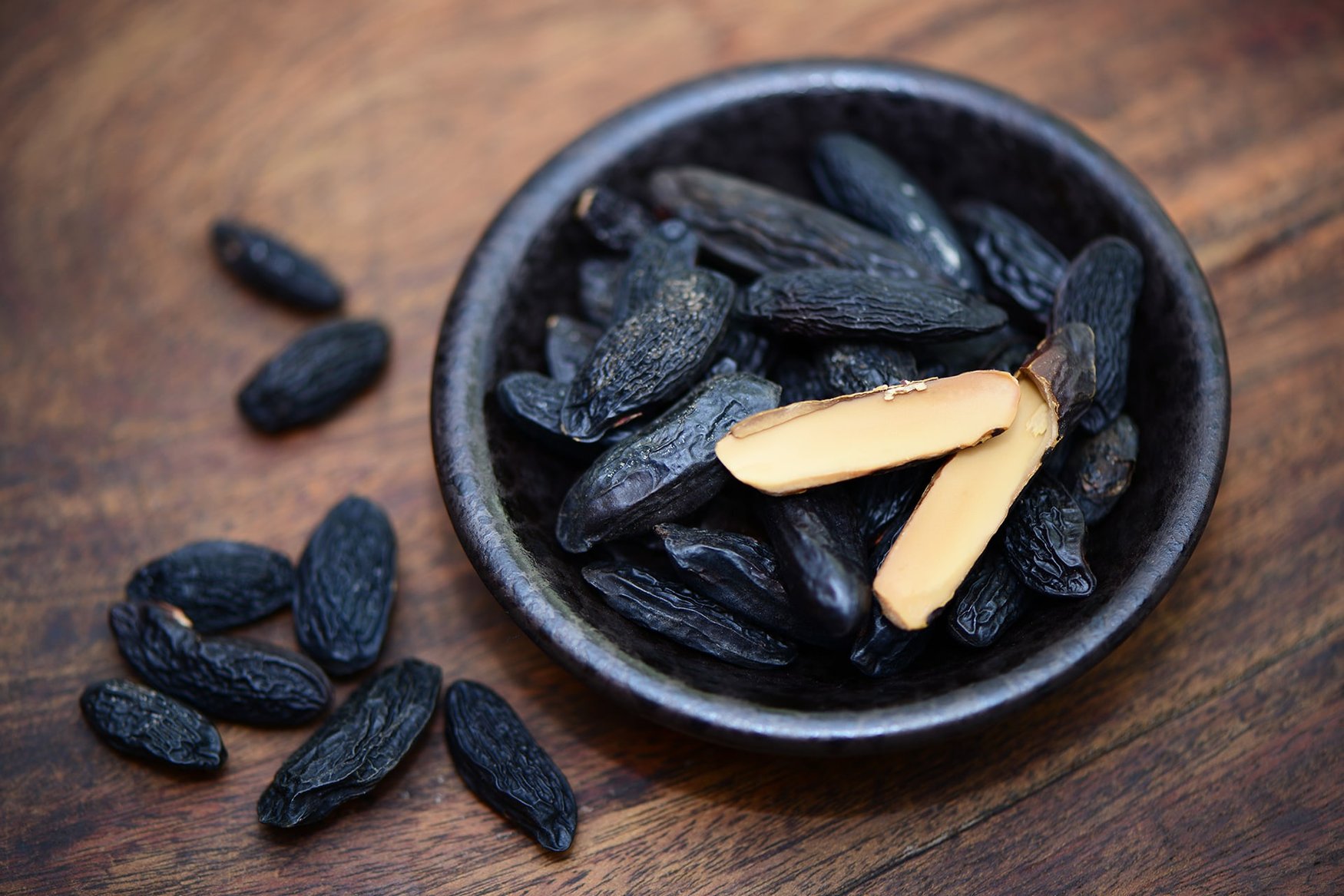Tonka Bean
Almond-flavoured, white glue, ‘Amaretto’, gourmand, balsamic, velvety, tobacco, smoky.
An intoxicatingly sweet scent of many facets: velvety, smoky, balsamic and whisperingly reminiscent of tobacco. Tonka bean is an excellent fixative, extending its milky-smooth facets to mix and meld notes in complex accords. A powerful, sensual scent that is often likened to vanilla.
Data sheet
- Type
- Extraction Method
- Used parts
- Natural raw material
- Solvent extraction
- Seeds





